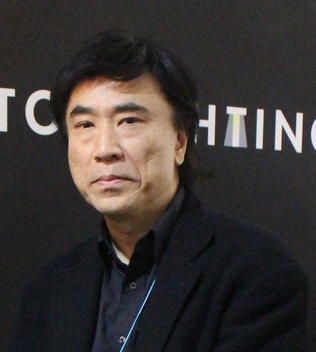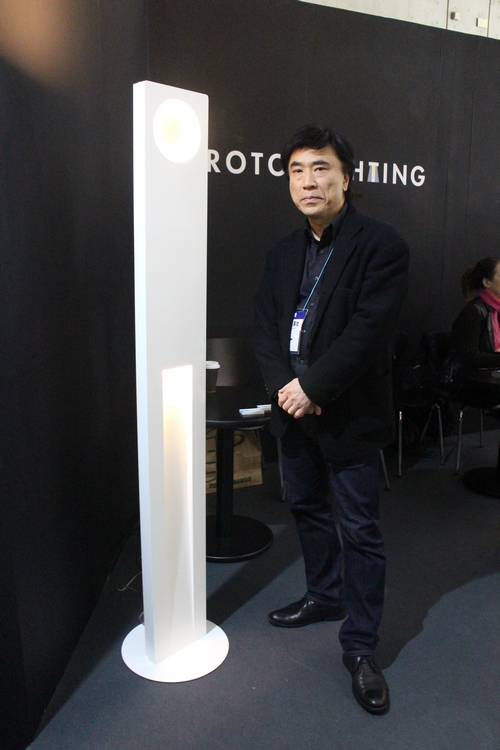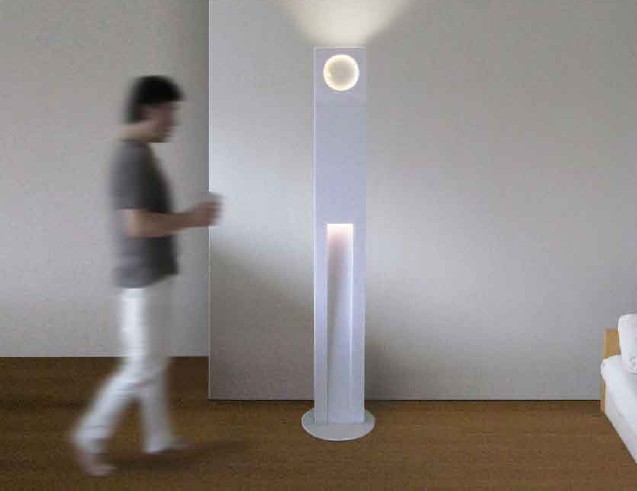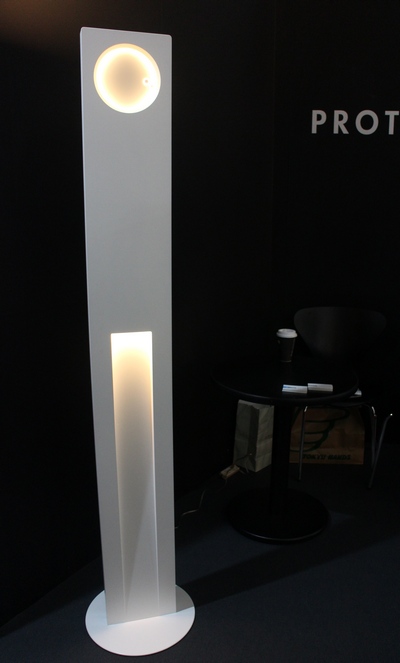Product designer and founder of Step Design Masahiko Uchiyama speaks about his latest prototype lighting Luna at Lighting Japan 2014, which runs at Tokyo Big Sight, Japan from Jan.15-17. Uchiyama graduated with an industrial design degree major from Chiba University Industrial Design Department in 1984.
|

|
|
Product designer and founder of Step Design Masahiko Uchiyama. (LEDinside) |
Lin: What is your design philosophy?
Uchiyama: I like simple and timeless designs. Simple and stylish. My design concept is similar to the Japanese Zen philosophy: calm and clean.
 |
|
Uchiyama next to his design Luna at Lighting Japan 2014. (LEDinside) |
Lin: Talk to us a bit about Luna’s design. When did you first come up with the design concept?
Uchiyama: This is a relatively new design. I was inspired in 2013 to make a lighting clock. It took me about six months to finish the design, which was completed last June. I chose the name Luna because I want it to be like the moon and create a very relaxing atmosphere, also because moon is very popular in Europe. Luna was designed in a simple style with the European market in mind.
Generally, clock power sources tend to be right behind the clock, but Luna is the first to incorporate the power within the luminaire. The clock uses three line LED modules, three vertically installed in the upper part, two in the clock, and one in the bottom. The top uses LED modules that are much brighter than the others. The three LED modules use common LED controllers to interact with one another.
 |
|
Step Design studio's LED luminaire and clock, Luna. (LEDinside/ Step Design) |
The LED color for Luna is warm like (incandescent) light bulb, with a very warm orange of 2700K. LED color is very important in lighting designs, and I prefer warm LED colors.
The clock is made with medium-density fiberboard (MDF) wood panels and painted in white. I might change the clock material to aluminum, metal or other materials for mass production purposes.
Lin: When will Luna be mass produced?
Uchiyama: I hope to be able to find a European manufacturer at Lighting Japan 2014 who will be willing to mass produce Luna. So far an Austrian and Japanese manufacturer have shown interest in Luna, but I hope more manufacturers will become interested. The Japanese manufacturer that showed interest had plans of exporting the product to U.S., but that is not the market I want.
I hope Luna can enter high-end market in Europe and ideally be sold at 100,000 Japanese Yen (US$ 957.20) after mass production.
 |
|
Step Design studio's LED luminaire and clock, Luna. (LEDinside) |
Lin: Is this the first time that you’ve used LEDs in your designs?
Uchiyama: No. I’ve been working with LED designs for 10 years already. I am always looking for energy efficient lighting, especially after Fukushima (incident) I am always thinking about how to make more energy efficient lighting. I will continue to use LEDs because they are energy efficient, have no power loss and are environmental. I definitely will not consider using (incandescent) bulb in my luminaire designs.
Lin: Will you consider using OLED material in your designs in the future?
Uchiyama: OLED is very costly right now, and I can’t really use it if I want to mass produce Luna. I need to be economic. I might consider using OLED when it’s cheaper. (But in my opinion) OLED panel is only one shape there is not really any design.











